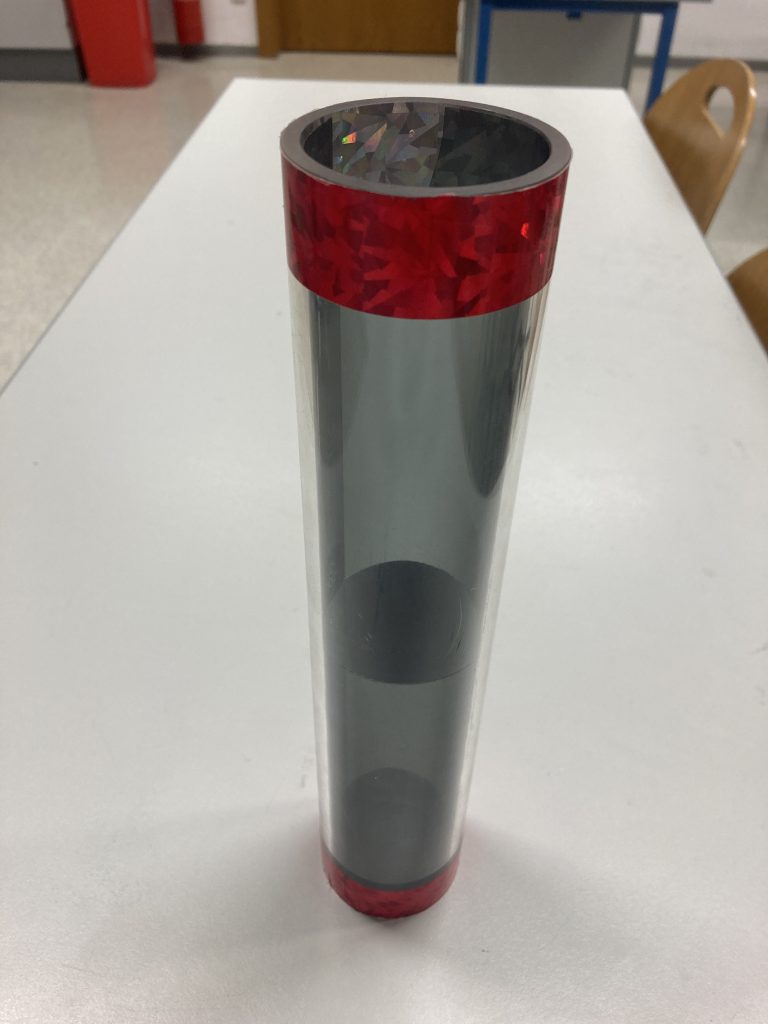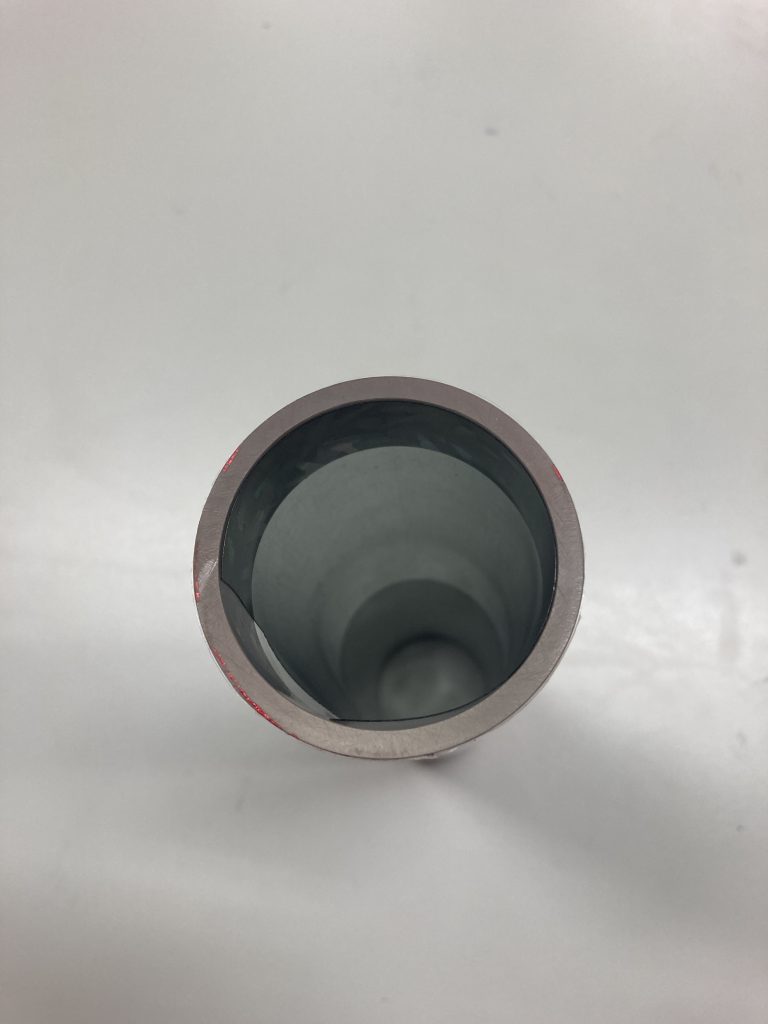written by Michael Himmelbauer
I am quite sure you have already seen it or at least heard about it: the magic tube. An optical experiment which is usually shown at the presentation evening of our school. An experiment with the help of which you can impress students from primary school as well as grown-ups (believe me – I am talking out of my personal experience). Although the name sounds complex, it can easily be done at home.
Here is what you need:
- a transparent plastic tube with a length of approximately thirty centimeters
- two polarization-filters (honestly, these could be the components the most difficult to get)
- a screwdriver
- a ping-pong ball (or something similar)
At first, you have to put the two polarization filters into the tube rotated by an angle of 90 degrees as shown in the picture:

As you may expect, a round black disc can be made out in the middle of the tube. In order to check whether it is real or not, you could use the screwdriver or the ping-pong ball to try if you are able to penetrate the disc (especially young children can be impressed by that). After some tries you might find out that the magic black circle does not really exist or is at least not resistant against your power (caused by their knowledge and perspective, younger students are often confused at that point).

But why can a black disc be seen even if there isn’t anything inside the tube except two plastic films?
First of all, we have to get in touch with the physical discipline of optics. (Now you might ask yourself: What the hell is that?) It is the science of the spreading of light and the effects of different materials on its behavior. Normally, light is a wave spreading from its origin (for example the sun, but also the lightbulb inside the physics room) into all directions. As soon as it gets to the polarization filter, only the horizontal or vertical component of the wave is let through and the other parts are kind of absorbed by the film (at least, it is easy to imagine this physical process like that). To simplify the process, we imagine that light does not exist out of vectors into every direction, but only into the following two directions: horizontal and vertical. As you put the two filters rotated by an angle of 90 degrees into the tube (in case you read the instructions carefully), both one of them only let 50 percent of the entered light pass through. And in case you are able to square 0.5 (I suppose you can or know how to use a calculator), you’ll find out that only 25 percent (so almost nothing) of the original amount of light will pass both films. And that is why a magic black disc can be made out inside the tube. In case you are talented in imagining geometry (or attend geometry class), you might assume that when you look through both filters when being amazed by the effect inside the transparent glass, the waves getting to your eyes (ask a biologist if you have any questions concerning that topic) have to pass both polarization filters and that is why there seems to be an almost black object. The color of the disc can be explained by the fact that if 75 percent of the light is absorbed, the rest (25 percent) appears to be quite dark.
Just in case you are really fascinated by the effects of two toned plastic films, you can try watching reflections of the window on a smooth surface (for instance the floor in the physics room) by looking through one of the polarization filters. While rotating the filter slowly, you might find out that you can see the reflections when holding it in one direction, but in the other direction, they disappear. It’s magic, isn’t it?
To sum up, it can be stated that with the help of two polarization filters, many spectators can be impressed and quite some things can be found out about the characteristics of the magic waves that light up our everyday life.
source:
Anon.: Polarisation von Licht. Einführung. https://www.leifiphysik.de/optik/polarisation/grundwissen/polarisation-von-licht-einfuehrung [last access: 22.01.2022]
fotocredit: (c) by Michael Himmelbauer
